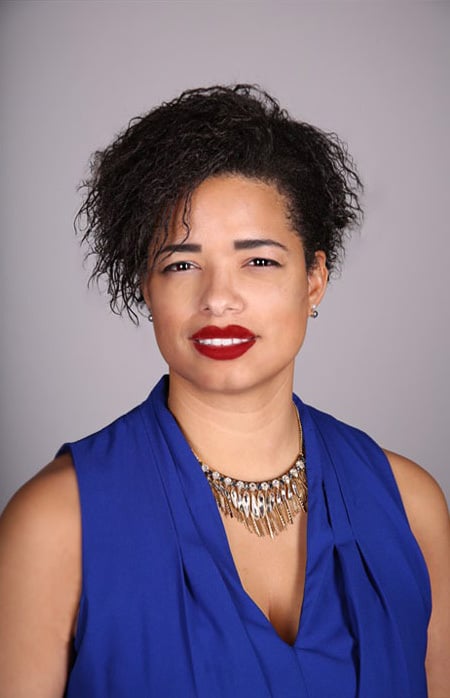Komen Researcher Dr. Aileen Fernandez was inspired to focus her research on biomarkers after working in a women’s imaging facility and observing tumor biopsies. As an Afro-Latina woman, she has dedicated her career to disparities research as a member of Komen’s Training Researchers to Eliminate Disparities program and to identifying effective therapies based on a tumor’s makeup.
Fernandez, a post-doctoral associate at Yale School of Medicine, recently talked with Susan G. Komen about her research and why identifying persons who don’t respond to treatments can be just as important as finding ones who do.

Q: What kind of research are you working on in the lab?
A: I’m in the field of biomarker discovery and development. I love biomarker discovery because it is a way to make a person’s life easier in a more direct manner. Our lab focus is ‘not only trying to identify the individuals who are going to respond to treatment. We’re really trying to identify the ones who aren’t because we don’t want those individuals to go through all this awful treatment that’s so expensive when we can avoid that and make their quality of life better.’
Q: How does biomarker discovery work?
A: A biomarker is any molecule in your body that can be measured to provide information about your health. We can use these biomarkers to guide treatment and tell a doctor whether or not a person should receive a particular type of treatment. For an individual with breast cancer, when she or he presents with a lesion or growth they get what’s called a tumor biopsy. A doctor will take out a little bit of the tumor and send it out for testing. And those tests are looking for three specific biomarkers – an estrogen receptor, a progesterone receptor and something called HER2. By identifying these three biomarkers, doctors are able to determine the type of breast cancer, like hormone receptor positive, a person has which will determine the treatment plan.
Thankfully science has propelled itself forward so much that we are able to give individuals targeted treatments that will presumably work because of the biomarkers that are found in the tumor.
Q: Triple negative breast cancer (TNBC), which is an aggressive form of breast cancer that primarily affects young and Black patients, doesn’t have a treatment target because the tumor lacks an estrogen receptor, a progesterone receptor and HER2. What have you learned about TNBC during your research?
A: Triple negative breast cancer accounts for 15 to 20 percent of all breast cancers and it does lack those biomarkers. We have to treat it with systemic chemotherapy, meaning the treatment goes after your body’s cells and cells are everywhere, not just in the tumor. When a tumor has a biomarker that has a targeted treatment, the treatment just goes after the tumor. So, there are a lot of treatments we can’t use on triple negative breast cancer.
Q: How did you become interested in biomarker research?
A: After I graduated from college, I was working in a women’s imaging facility and was doing a biopsy tracking project where I got to learn what happens when a woman comes in with a suspicious finding in her breast. It was really powerful to see something get biopsied and then go through the process of identifying the biomarkers in the tumors.
As a PhD student I worked on triple negative breast cancer and focused on health disparities, but it was mostly basic science research, and I was interested in doing more translational work. Now, I am working directly with breast tumor tissues doing biomarker discovery. I know the results I am getting from the lab are directly associated with an individual and I feel my work directly reaches the person.
Q: I wanted to go back to the “lab mantra” you described earlier about trying to identify the patients who won’t respond to treatments. Oftentimes we might think something has failed if we didn’t get the intended outcome, but it sounds like the opposite might be true in your research.
A: In terms of developing more treatments for breast cancer, I think it really helps to narrow down the treatments that are and aren’t working for each subtype of breast cancer. One of the things I like about this lab is that we’re not just going after one technique. We go after 10 or 12 at a time – we’re trying a bunch of different methods in a bunch of different cancers, because every cancer is a little bit different. By working with tissue samples, it helps to keep the focus on the person at the forefront and remember this work is helping people. Even if I’m getting negative results (which is happening), I’m finding out what doesn’t work. So, slowly, we’re taking all the things that don’t work off the table.



